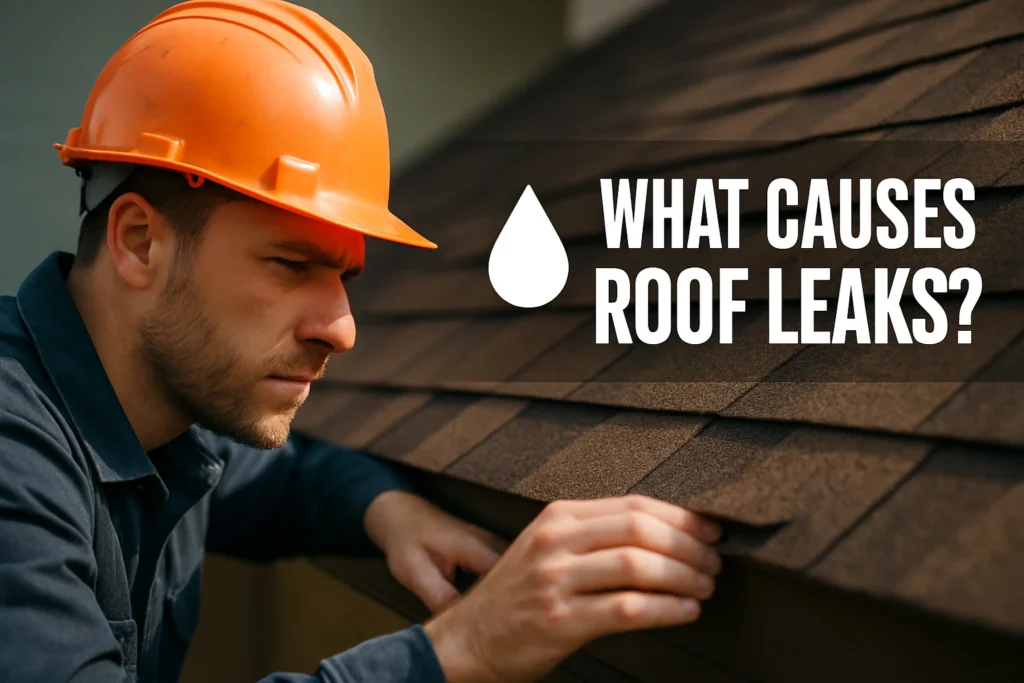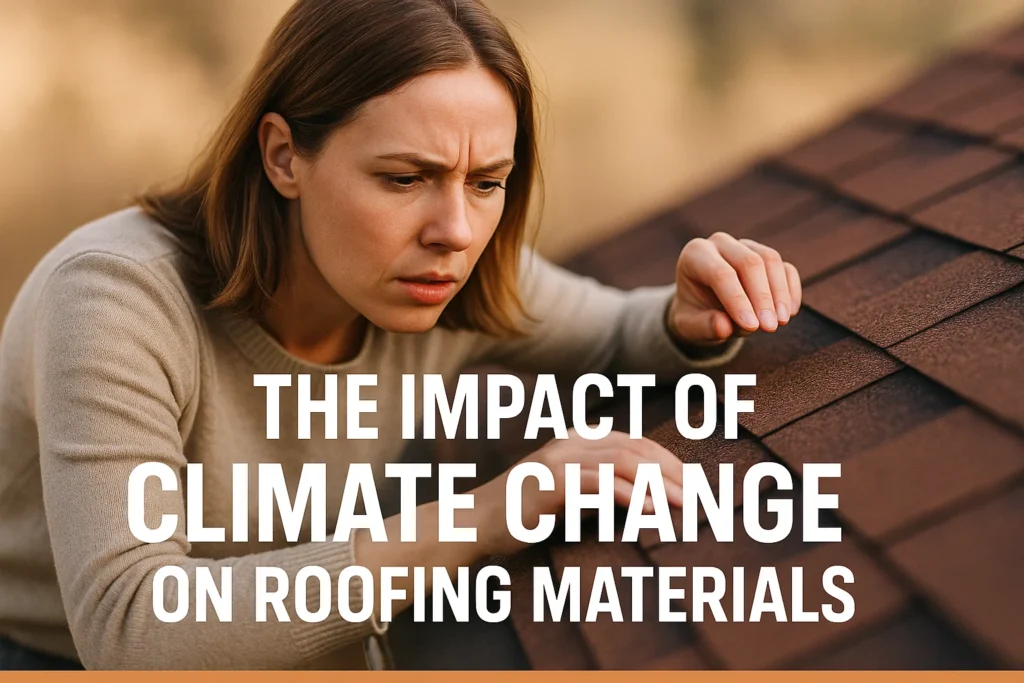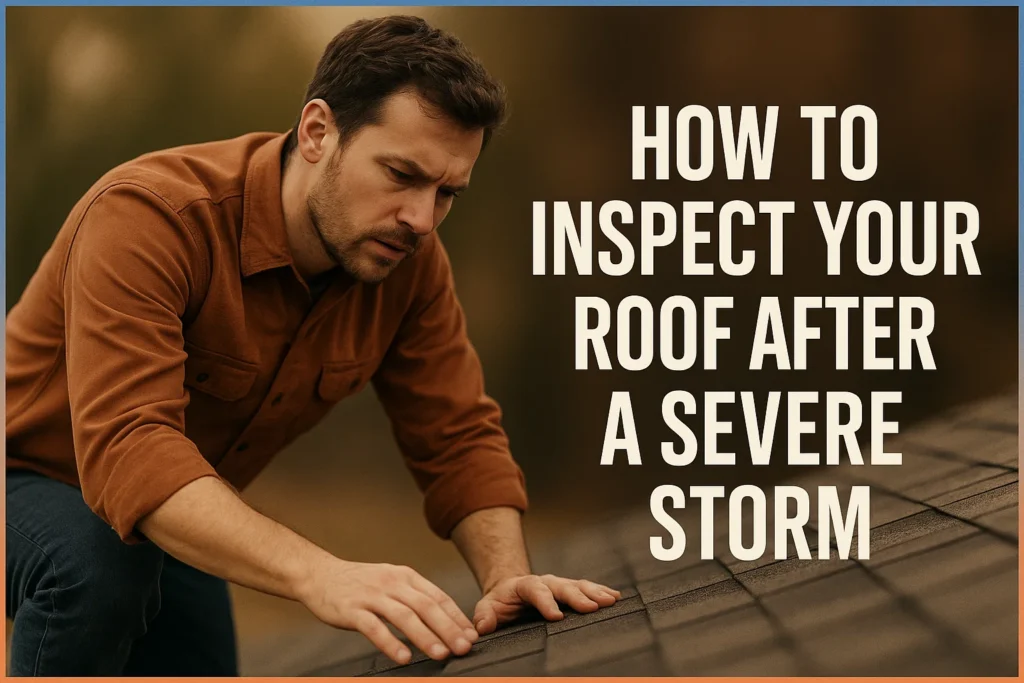Are there water stains on your ceiling or does it drip when the weather is wet? It’s possible your roof is leaking and finding the cause can sometimes be hard. Here, we are covering what typically results in your Roof Leaks, for example, cracked shingles, blocked gutters and ineffective flashing.
We’ll explain what causes roof leaks, how to find those hidden leaks and give you the best advice for fixing them early. If you want to face the issue yourself or need advice about when to call an expert, this guide can assist you. Should you be asking questions such as “Why is my roof leaking?” or “What can fix it?”, you have come to the proper place. Push the subscribe button and continue reading to discover how to maintain your roof at its best.
5 Common Causes of Roof Leaks
1. Damaged or Worn Roof Flashing
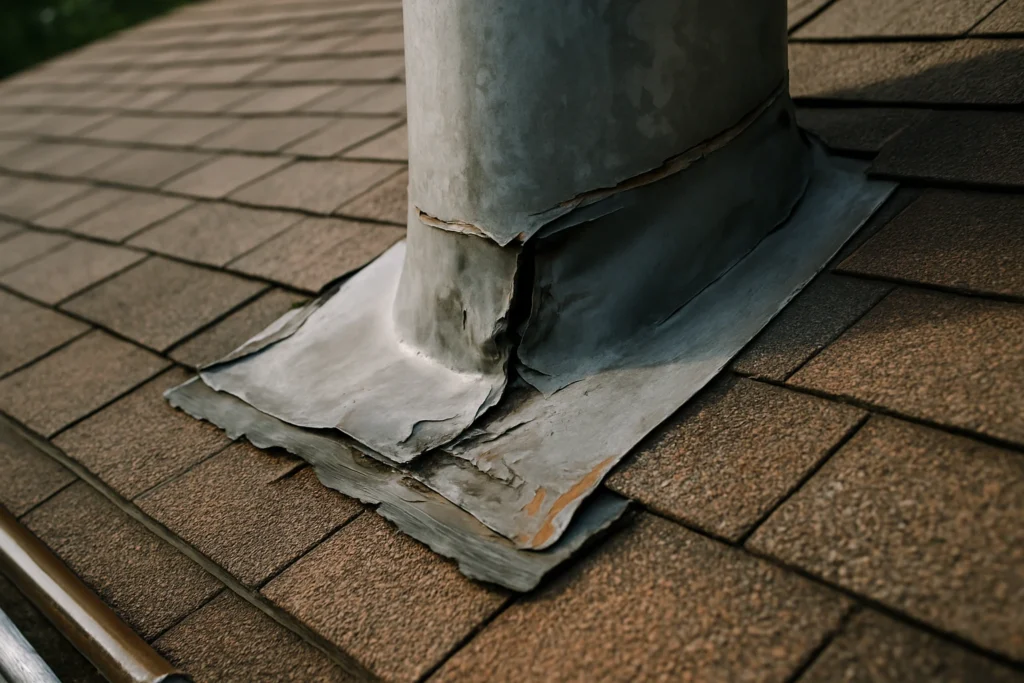
Roof flashing, made out of thin metal, directs water from parts such as chimneys, vents and valleys. Eventually, the hot and cold weather and other outside factors can lead to rust, bending or flashing coming loose. Should flashing stop working, water can move beneath the shingles and bring about internal leaks.
2. Cracked or Missing Shingles
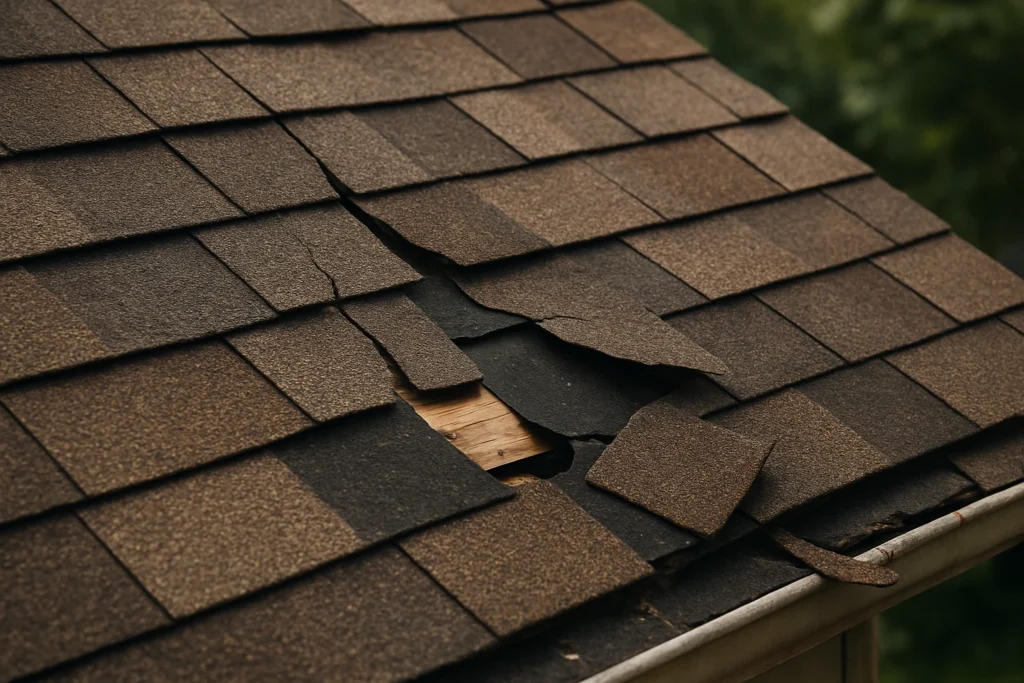
Shingles are the first ones to feel the effects of rough weather. Gale-force winds might blow them away, hail may harm them and intensive sun exposure can weaken them. If you have even one damaged shingle, moisture can easily reach your underlayment and roof deck which may lead to faster leaks.
3. Clogged or Broken Gutters

The main purpose of your gutter system is to direct water from your roof far from your foundation. If the gutters are blocked by leaves, twigs or debris, water might collect on the roof. Time eventually allows this pooled water to enter weak parts which can result in rot or mildew.
4. Poor Roof Installation or Repairs
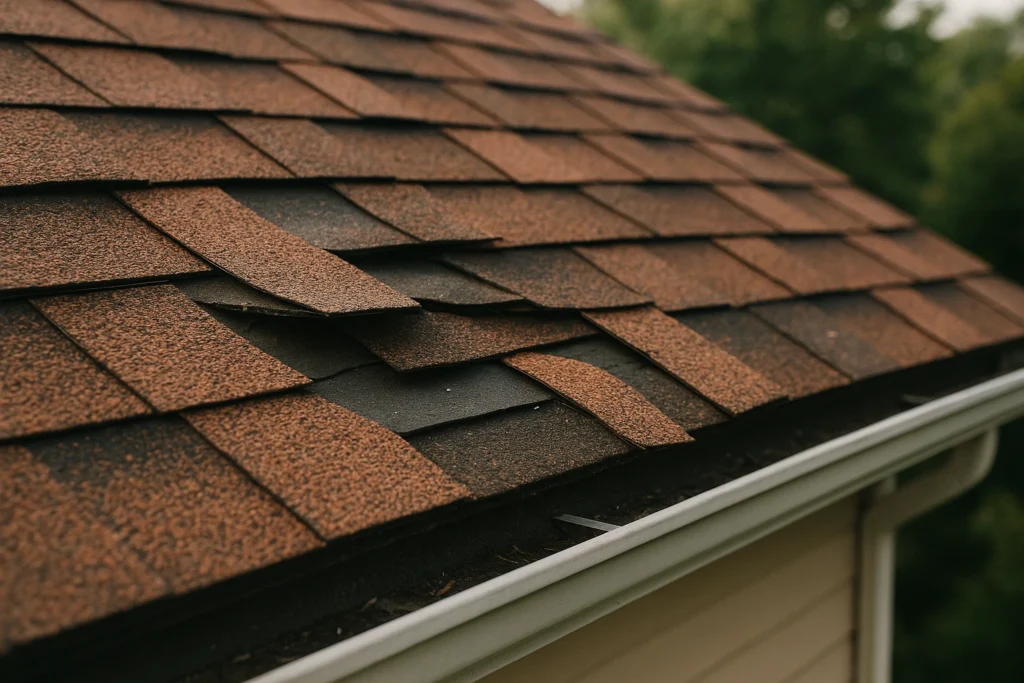
Leaks can still form in a strong roof if it is not put in place properly. It is common for these errors to occur on roofs: shingles not placed correctly, flashing not positioned in a good way and gaps in the underlayment layer. Similar damage can come from poor repairs which might leave you with issues again after they are done.
5. Roof Patching Failures
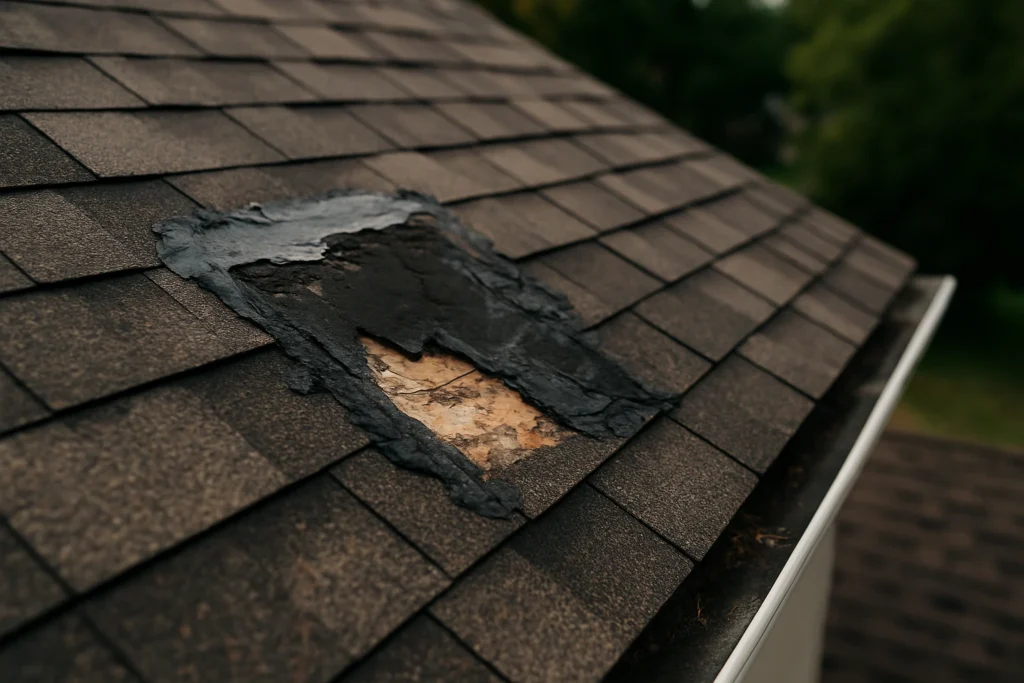
Temporary ways to patch a roof with sealant or tape may show results for a short while, but they don’t usually last. If the main problem such as warped decking or changes in the structure, is not fixed, the patches might quickly break and allow more water to get in.
How Water Leakage from Roof Happens
Now that we discussed the typical causes of roof leaks, it is necessary to examine how the damage becomes active water intrusion. A leaky roof is sometimes unnoticeable right away, making people wonder what is making water come inside their homes. In the next section, we will discuss the beginning of roof water leakage, the signs you need to watch for and how little issues can develop into big interior problems. We should examine it step by step.
Water Dripping from Roof and Its Signs: It’s not always the case that water leaking from the roof comes in a slow, set flow. In some cases, the signs of water damage will be visible as paint bubbling, yellow or brown marks on the ceiling or warped plaster. At times, a stuffy smell in the attic is what reveals there’s a leak.
Understanding Water Leak in the Roof: Rainwater usually moves across rafters or insulation before it reaches the visible surface. As a result, it becomes difficult to find out where the infection came from. A leak on your ceiling may really start at a vent or flashing that is 10 feet from where you see it.
Why my Roof Leaks? Common Signs
Indications to watch for are damp insulation in the attic, mold growing on roof beams, sunlight coming through the roof boards and drywall that is peeling. If prices for heating or cooling rise unexpectedly, you may have moisture clogging your insulation as well.
Identifying Leaks in Roofs: You should check the areas around chimneys, skylights, vent boots and flashing zones first. Be sure to check where two roof sections come together, as water can settle there. You should also examine the edges of your roof where strategy-driven wind can cause rainwater to get under the shingles.
Spotting Leaking from Roof Interior: Make sure it’s safe, then look in your attic and examine its insulation and wood surfaces after a storm. Search for telltale water stains, signs of dampness or frost when it is winter. Always have a flashlight nearby and use an object to note down any doubtful spots.
Detect Hidden Roofing Leaks: Leaks hidden from view may be difficult to solve. You can buy a moisture meter or seek out a car repairs expert who has them. Because of these instruments, you can now see where walls or floors are wet.
Roof Flashing and Its Role in Preventing Leaks
Roof Flashing: Usually, roof flashing is manufactured from galvanized steel, aluminum or copper. The system is fitted in weak sections, for example, valleys, dormers and holes to guide water safely from the rooftop.
Roof Flashing Can Fail and Cause Leaks: Flashing usually fails because of corrosion, improper placement or no sealing being done. Everything from high winds and storms to the sun’s UV rays and shifting roofs can halt flashing and make it possible for water to leak in. If the flashing doesn’t do its job, water will reach the inside of the roof soon.
Fix Flashing on Roof: For minor problems, you could probably use roofing caulk to seal the area again. When flashing is very rusted or bent, it must be swapped out. This entails lifting nearby shingles, getting rid of the old piece of flashing and securely nailing and sealing the new one. Hire a professional if the work involves lots of space or involves a challenge.
How to Fix Roof Leaks
Quick Fixes for Roof Leak: Stop water from coming in temporarily by using roofing tape, a temporary tarp or sealant. Such solutions come in handy when it is raining and you cannot make permanent repairs right away.
Repair a Leaking Roof Properly: You should determine the source of the leak first. Take out any broken shingles or flashing, put in a new layer of underlayment and securely put on additional materials. Take your time to caulk, seal and inspect the whole area; a poorly installed roofing section can damage the entire system.
Roof Patch Methods and Materials: If the roof has asphalt shingles, use roofing cement and bring new shingles. Patch the holes in metal roofs by using the same kinds of metal and sealants. Both EPDM and rubber roofs need to use membranes and adhesives that are made for them. Consider what form of roofing you have and its ability to withstand weather conditions.
When to Call a Professional for Roof Leak Repair: In case the leak covers different parts, if the deck is soft or if you can’t find what is leaking—call a pro instead. Favor Roofing LLC and other licensed contractors can give you the specialized help you need and ensure the repairs are effective.
Conclusion
Leaks on a roof can be a terrible problem, but they are easily avoided. After you discover what causes a roof leak, know how to identify it and how to fix it properly, you are fully in charge. Don’t neglect your attic, walls or ceiling until there is water damage in them. You can call Favor Roofing LLC for roof inspections or roof repairs, flashing changes or New roof installation. We can protect your house from damage by the weather at any time of year or season.
FAQs
Visit your attic when it is raining and check for stains, water marks or drenched insulation close to vents and chimneys.
Excess moisture in the home encourages mold which may result in health issues and damage to the building.
You can expect to spend around $150 for little damages and much more, up to $1,500, for significant structural repairs or damage to car materials.
Water spilling from clogged gutters can soak nearby shingles and bring about rot or leaks in the attic.


